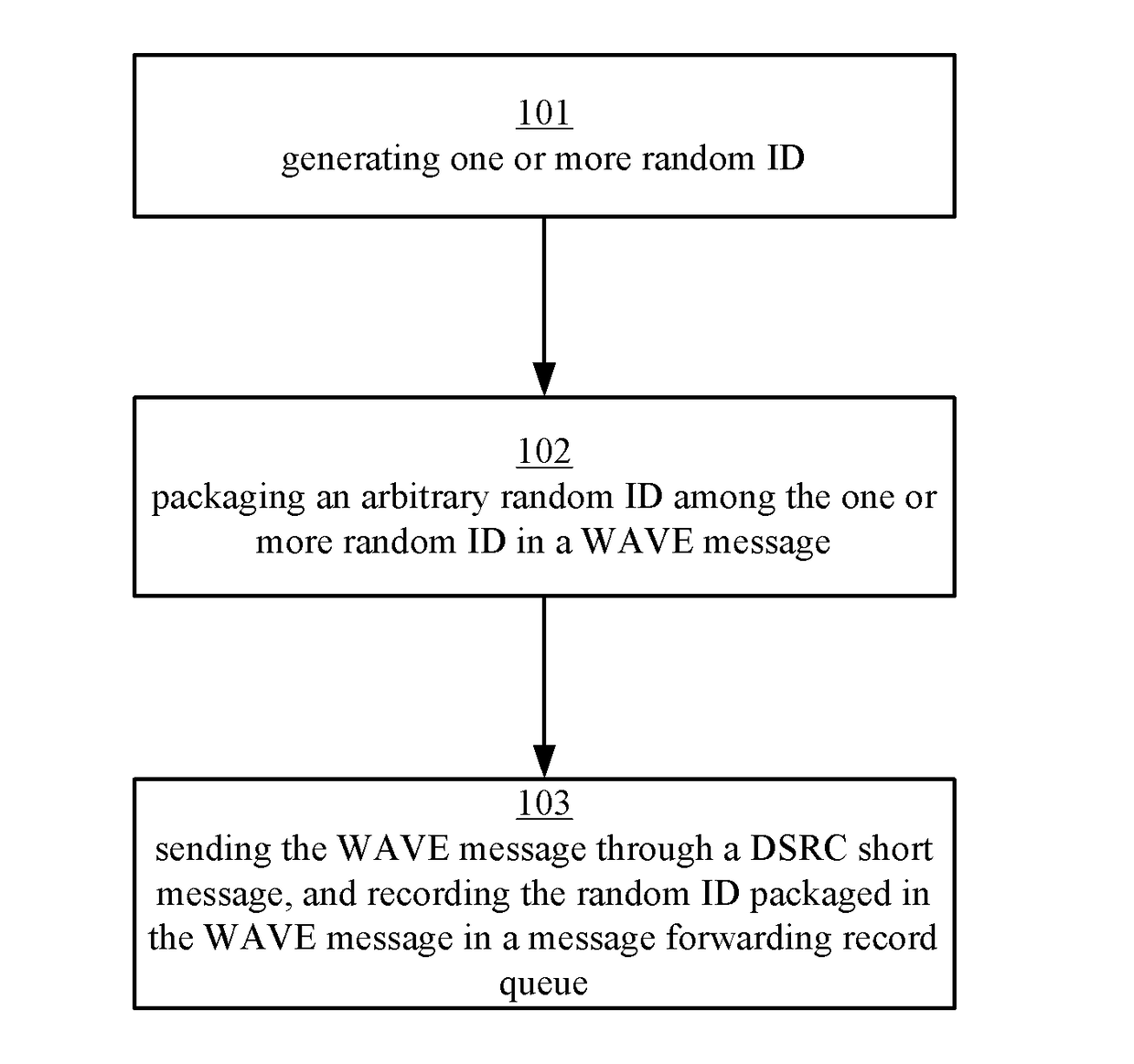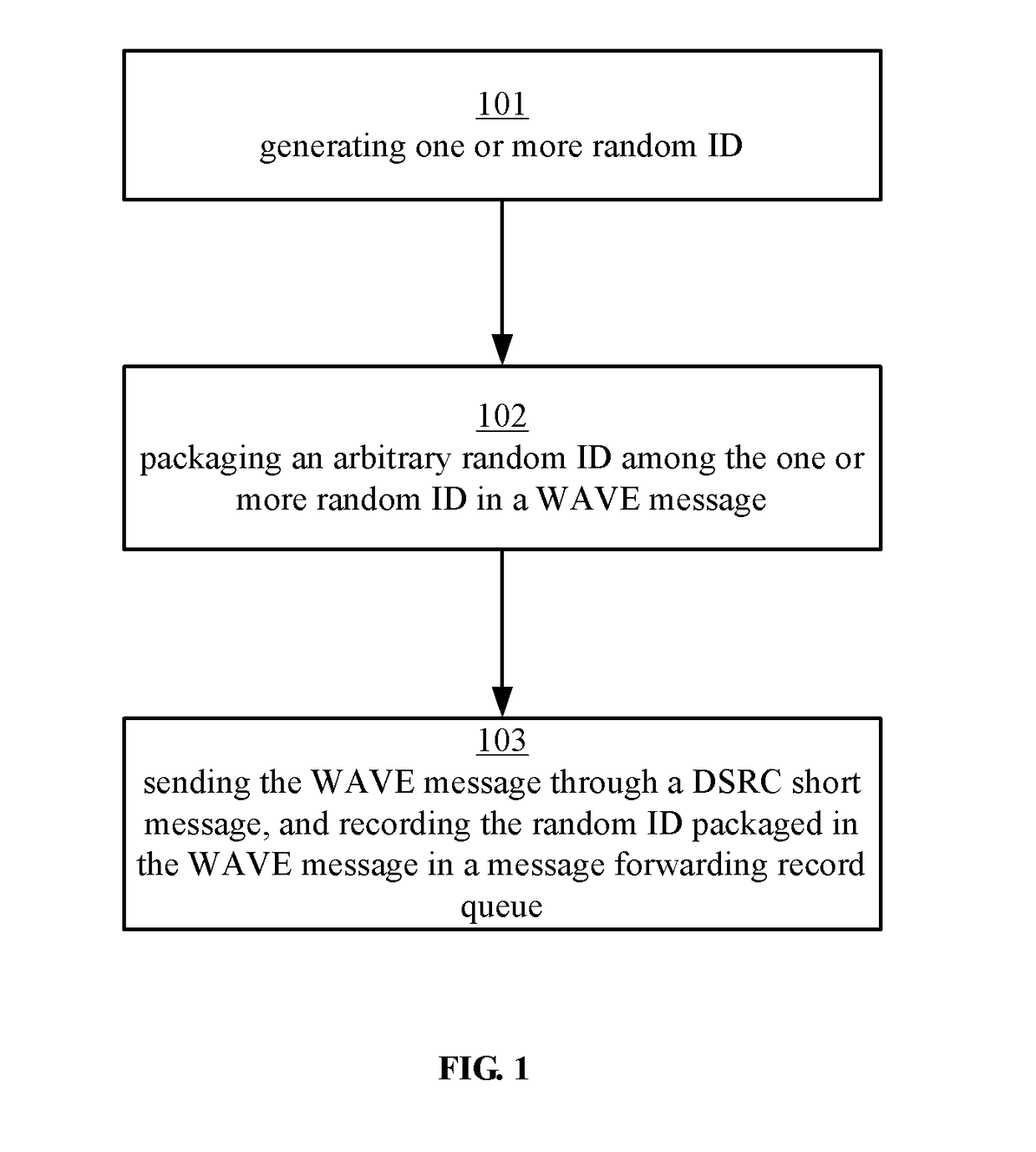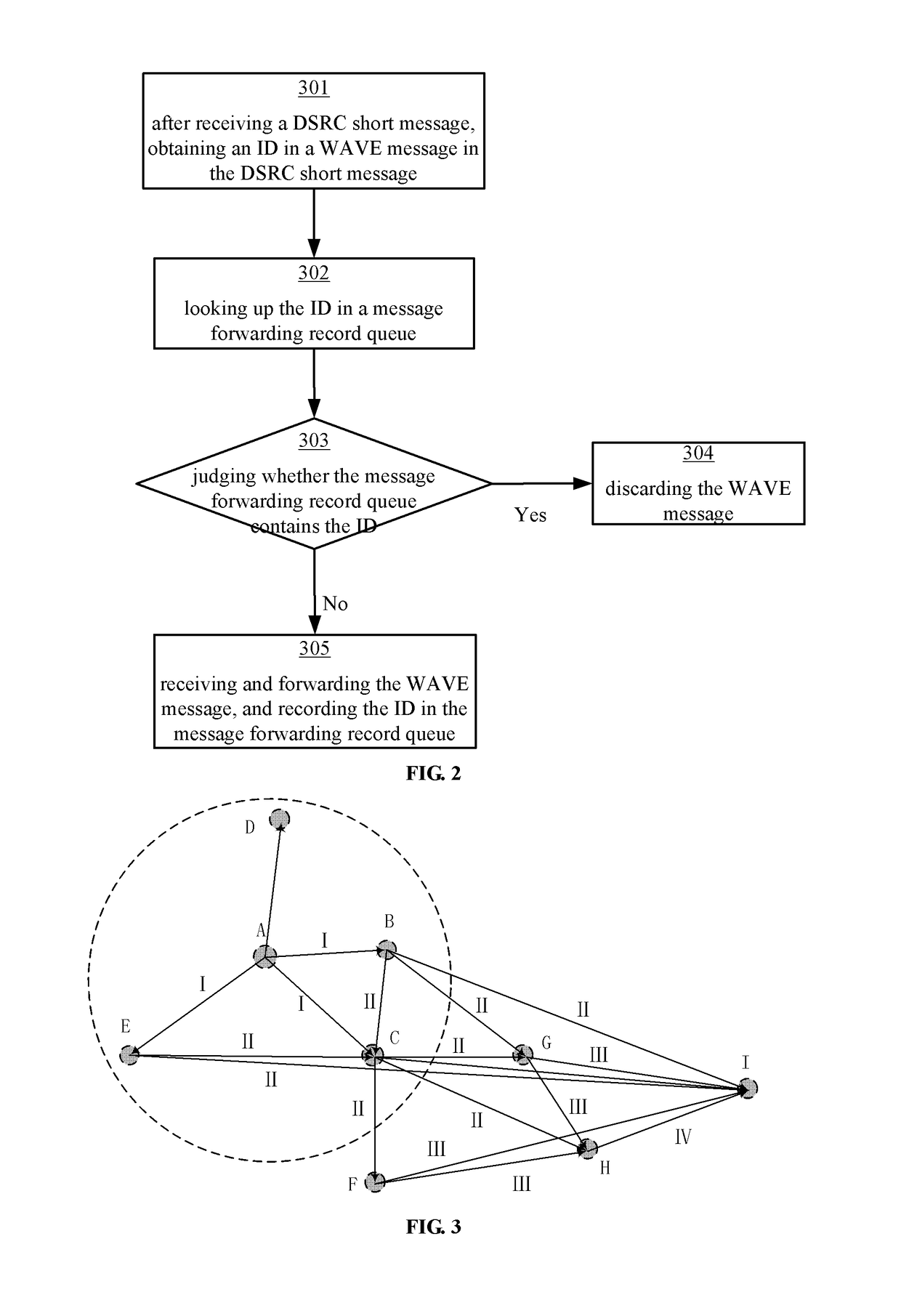Vehicle ad hoc network routing method, device and system based on wireless access in vehicular environments
a wireless access and vehicular environment technology, applied in the field of vehicular environment wireless access ad hoc network routing methods, devices and systems based on wave, can solve the problems of application difficulty in vehicle environment message routing and forwarding, and the inability to instantaneously require routing information, etc., to achieve timely response, simple implementation, and good practical
- Summary
- Abstract
- Description
- Claims
- Application Information
AI Technical Summary
Benefits of technology
Problems solved by technology
Method used
Image
Examples
Embodiment Construction
[0029]The technical solutions of one or more embodiments of the present disclosure will be described below in detail in combination with the accompanying drawings and specific embodiments.
[0030]For a vehicle ad hoc network VANET, dedicated short range communications DSRC (dedicated short range communications) technology can be generally used for achieving inter-vehicle communication. Wireless access in vehicular environments WAVE (Wireless Access in Vehicular Environments) technology is a technology which uses a 5.9 GHz wireless communication frequency band under a DSRC standard, an IEEE802.11P protocol group defines a physical layer standard thereof, and an IEEE1609 protocol group defines a data link layer, a transport layer and the above transmission standard thereof. The WAVE standard only aims at point-to-point communication and does not define the data forwarding and routing strategy under a multi-hop condition.
[0031]According to the embodiments of the present disclosure, a ran...
PUM
 Login to View More
Login to View More Abstract
Description
Claims
Application Information
 Login to View More
Login to View More - R&D
- Intellectual Property
- Life Sciences
- Materials
- Tech Scout
- Unparalleled Data Quality
- Higher Quality Content
- 60% Fewer Hallucinations
Browse by: Latest US Patents, China's latest patents, Technical Efficacy Thesaurus, Application Domain, Technology Topic, Popular Technical Reports.
© 2025 PatSnap. All rights reserved.Legal|Privacy policy|Modern Slavery Act Transparency Statement|Sitemap|About US| Contact US: help@patsnap.com



